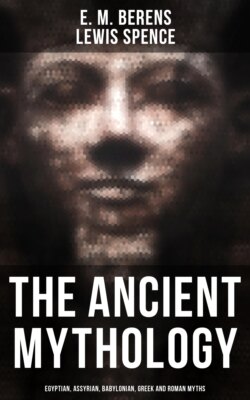Читать книгу The Ancient Mythology: Egyptian, Assyrian, Babylonian, Greek and Roman Myths - Lewis Spence - Страница 59
На сайте Литреса книга снята с продажи.
Ishtar
ОглавлениеIshtar was undoubtedly a goddess of Semitic origin and symbolized the fertility of the earth. She was the 'great mother' who fostered all vegetation and agriculture. It is probable that her cult originated at Erech, and in the course of centuries and under many nominal changes dispersed itself throughout the length and breadth of western Asia and even into Greece and Egypt. It is probable that a number of lesser goddesses, such as Nanâ and Anunit, may have become merged in the conception of this divinity, and that lesser local deities of the same character as herself may have taken her name and assisted to swell her reputation. She is frequently addressed as 'mother of the gods,' and indeed the name 'Ishtar' became a generic designation for 'goddess.' But these were later honours. When her cult centred at Erech, it appears to have speedily blossomed out in many directions, and, as has been said, lesser cults probably eagerly identified themselves with that of the great earth-mother, so that in time her worship became more than a Babylonian cult. Indeed, wherever people of Semitic speech were to be found, there was the worship of Ishtar. As Ashteroth, or Astarte, she was known to Canaanites, Phœnicians, and Greeks, and there is some likelihood that the cult of Aphrodite had also its beginnings in that of Ishtar. We shall enquire later whether she can be the Esther of the Scriptures. Astrologically she was identified with the planet Venus, but so numerous were the attributes surrounding her taken from other goddesses with which she had become identified that they threatened to overshadow her real character, which was that of the great and fertile mother. More especially did her identification with Nin-lil, the consort of En-lil, the storm-god, threaten to alter her real nature, as in this guise she was regarded as a goddess of war. It is seldom that a goddess of fertility or love achieves such a distinction. Gods possessing an agricultural significance are nearly always war-gods, but that is because they bring the fertilizing thunder-clouds and therefore possess the lightning arrow or spear. But Ishtar is specifically a goddess of the class of Persephone or Isis, and her identification with battle must be regarded as purely accidental. In later times in Assyria she was conceived as the consort of Asshur, head of the Assyrian pantheon, in days when a god or goddess who did not breathe war was of little use to a people like the Assyrians, who were constantly employed in hostilities, and this circumstance naturally heightened her reputation as a warlike divinity. But it is at present her original character with which we are occupied, indeed in some texts we find that, so far from being able to protect herself, Ishtar and her property are made the prey of the savage En-lil, the storm-god. "His word sent me forth," she complains; "as often as it comes to me it casts me prostrate upon my face. The unconsecrated foe entered my courts, placed his unwashed hands upon me, and caused me to tremble. Putting forth his hand he smote me with fear. He tore away my robe and clothed his wife therein: he stripped off my jewels and placed them upon his daughter. Like a quivering dove upon a beam I sat. Like a fleeing bird from my cranny swiftly I passed. From my temple like a bird they caused me to fly." Such is the plaint of Ishtar, who in this case appears to be quite helpless before the enemy.
The myth which best illustrates her character is that which speaks of her journey to Aralu, the underworld.
1. Ishtar, the Mother-goddess.—2. Ishtar as the Goddess of War.—3. Ishtar, the Goddess of Love.
